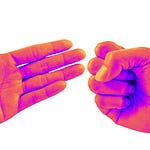Why do we tend to think that more is always better?
A long time ago, when I was a lowly assistant professor of English, I reported to a department chair who had an odd quirk. Whenever we were to work on a new task or design a new course, she would fall back on the same strategy: “We will take what we are doing now and just do more of it.” Every time she said that she would smile broadly and tilt her head to one side as though she had just invented the formula for instant success. The whole scene was bizarre as were her two underlying assumptions:
What we were already doing was a-ok and not worth improving; and,
That quantity was the same as or more important than quality, that size was all that really mattered.
On one occasion, she put me in charge of designing an honors version of our composition course for the top-tier students at our school. The idea was to make the course more challenging and intellectually stimulating to attract and retain brainiacs. The reality was somewhat different, but that is material for another day. As always, my department chair gave me her standard marching orders: “take what we already do in our regular composition course and just do more of it,” cue weird smile and head tilt.
When I asked what she meant, she seemed flustered and told me to have them do more reading and writing than the other students. That is all. Since I already knew that our current composition course was a dud, I took a different path and created a course that was enriched by rigor and not rigmarole. The strangeness of her presumption struck me though: the notion that more of the same is always better.
Is Bigger Better?
Let’s face it. We as a people are obsessed with size. Some men worry and others hope that their foot, nose, or even finger length might suggest to the world something about the dimensions of their private tidbits. Some women imagine the sheer mass of their physical assets is the principal determinant of their allure or its absence. Both men and women spend money on enhancements — from padding, to pills, to surgery. Meanwhile most every child can’t wait to be taller. Cityscapes climb higher and higher and suburbs sprawl further and further. Just about everyone wants a bigger car, more square footage, a larger paycheck, more muscular muscles, brainier brains, and gut-busting restaurant portions. Bigger is just better.
Except when it isn’t. In some cases smaller is better. Here is a short list of things we prefer to be smaller: waistlines, local snow accumulations, taxes, tumors, debt, workloads, and unsightly rashes.
Another Opportunity
Many years after that first incident, when I was a vice-president of another college, I was asked to join a committee that was already at work trying to land a lucrative federal grant aimed at improving our academic quality.
By the time I joined the committee, they had already drafted a proposal that followed the silly do-what-we-are-doing-just-more-of-it formula that I was so familiar with. The idea that the federal government would give us millions of dollars to simply double down on a system that had long been, by every reasonable measure, an abject failure, was ludicrous. Imagine. It wasn’t like we were a military contractor. Fortunately I was able to introduce several new initiatives that moved our focus away from more of the same and toward a fundamentally new approach. In the end, we were awarded the grant.
I tell these tales because I have always found the whole more-is-better philosophy to be vexing. Why does size matter so much? Why is bigger better in so many minds? Is it because so many minds are truly small?
For More on Size, Look to Your Pocket
I am going to say something unexpected here. American coins can offer a great lesson in the error of overvaluing size.
I want you to do a little experiment. If you live in the States, this should be easy. If not, make this a thought experiment.
Empty your pockets or go raid wherever you keep loose change. (Americans don’t use coinage much these days, so many of us have a container or a drawer where we toss annoying coins.) I want you to find two pennies, two nickels, two dimes, and two quarters. If you have fifty-cent or dollar coins, grab two of each as well.
Now, divide the coins into two sets with only one denomination per set. In other words, each set will have one penny, one nickel, one dime, etc. Next, arrange the first set according to assigned value: 1 cent, 5 cents, 10 cents, etc. Then arrange the other set according to physical size, the smallest diameter to largest.
What do you notice? Are the sets arranged in the same order?
Americans are used to the arbitrariness of our coin diameters. To much of the rest of the world, though, it must seem absurd. I understand why a nickel (5 cents) is larger than a penny (1 cent), but why is a dime (10 cents) smaller than both of them? And those dollar coins are barely wider than a quarter (25 cents) and significantly smaller than a mere 50-cent piece. What’s a poor vending machine to do to make sense of this madness?
For comparison, Canadian coins increase in width as they increase in value with the exception of the dollar coin, which is slightly smaller than the 50-cent piece. Because of other design features, though, the Canadian dollar is not easily mistaken for a 50-cent coin. European Union coinage is even more uniform, with each coin growing in diameter as it increases in value. It’s as sensible as the metric system.
But American coinage is perfect for our lesson. And what is that lesson?
Size really doesn’t matter because bigger is not necessarily better. Just as a gigantic nickel is worth less than a teensy dime, a bigger income might require a lot more work, maybe more work than you feel you are getting compensated for. In fact, many people work several times as hard for merely twice as much salary. I know. I’ve made that fool’s bargain myself.
In the case of the honors course I designed, having students do more writing can, up to a point, be valuable. But overwhelming students with work — even stellar students — will result in diminishing returns. Moreover, the point of the honors composition course was to attract and retain better students, not abuse them to no end.
We see this sort of thing in the workplace all the time, and it is as vexing as our gargantuan nickels. Sometimes it is even exploitative. More hours spent on the job is better. More time spent at the desk is better. More paperwork is an indicator of higher productivity. Yikes!
Great leaders, unlike most bosses, deal in reality and are sensible about these things. They have perspective on the impact of having their people do “just one more thing.” They understand that not everything that can be counted counts. Just because a worker filled out her quota of TPS reports does not mean she did any meaningful work. And if she fills out “just one more” TPS report today, does that mean she has to fill out her quota plus two more tomorrow to get a gold star from her boss? The relentless drive toward more is a key component of burnout.
So, yes, size matters if you work in an environment where everything is counted except value. In that world, the tallest stack of forms wins. The person with the most hours at their computer gets the coveted parking space. The person who comes in on Saturday to complete some more pointless tasks gets a promotion. It makes as much sense as a vending machine that values nickels over dimes. How silly is that?
What is with this obsession with size? How conscious are you of the tendency to see more as always better?
To be a great leader, you need to apply the right measures for the right situation, and I can help. Click below for your free consultation and gift.
If you want to learn more about how to become a great leader in this world of bad bosses, visit GuidanceForGreatness.com.
Ask questions or make suggestions by emailing me directly at
Join the conversation by leaving a comment, and leave a like or review.
Please share this post on social media.
And be sure to SUBSCRIBE to have On Leading with Greatness sent weekly to your inbox.
















Share this post